Planting & Protecting Trees For Future Timber
“Provenance is everything. It is as important as how you plant and care for your trees,” Edward Brun, trustee and managing forester for the Clackmannan Woods Settlement.
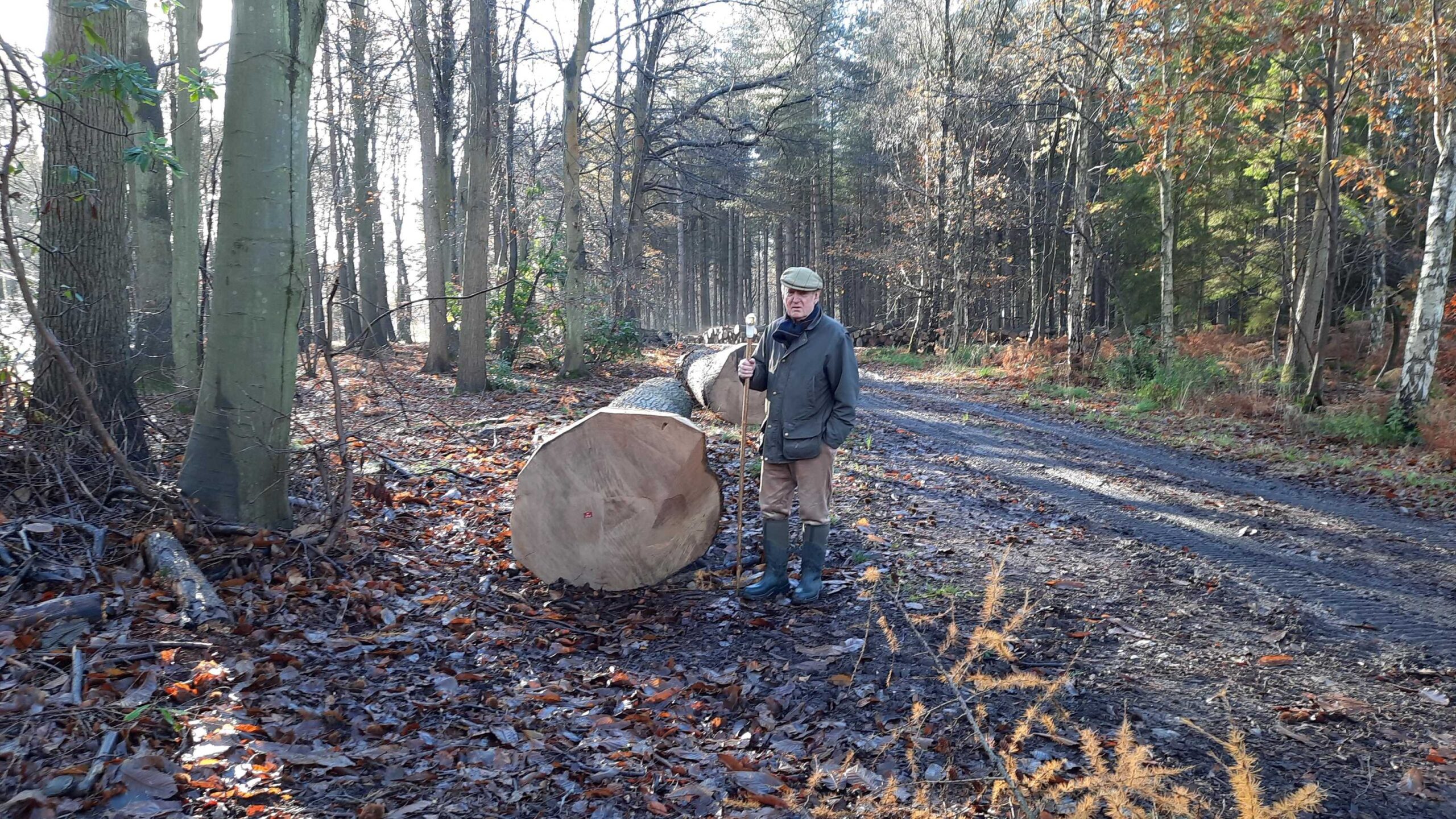
Clackmannnan Woods Settlement is know for its high quality, large diameter timber. Above: Edward Brun with a recently felled sweet chestnut
Fulmodeston Severals and Holmes Wood in Norfolk are two of the three woodlands that make up the award-winning Clackmannnan Woods Settlement. The woodlands are known for a wide mix of tree species and for producing high-quality, large diameter oak, sweet chestnut, beech and softwoods. They have each received funding from our Grants for Resilient Woods for restocking projects. In Holmes Wood an additional grant has been made for the management of natural regeneration.
Spray Repellent Versus Deer fencing
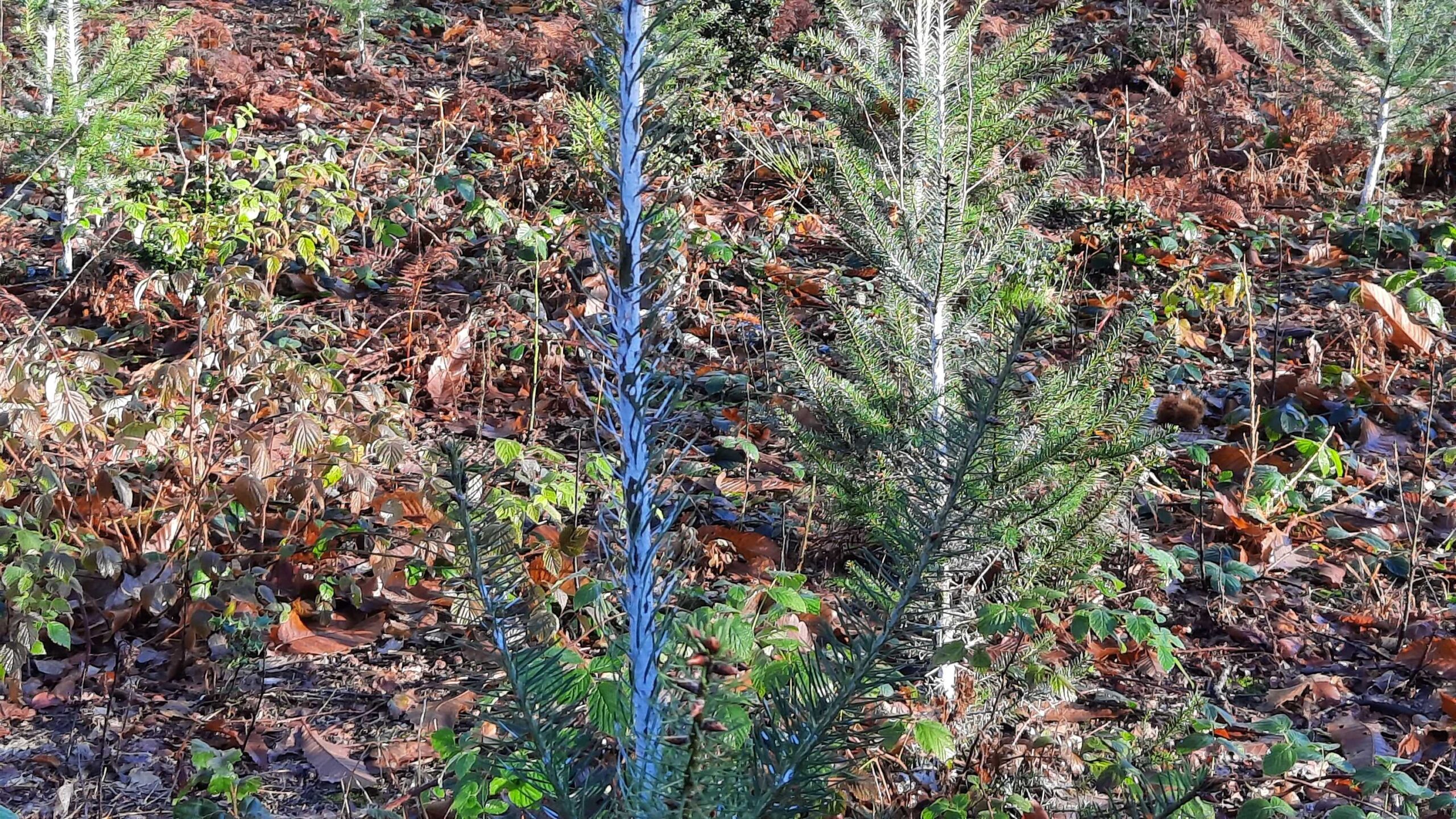
Above: Trico spray gives this leader a blue appearance but acts as a deterrent to deer
Trico, a deer repellent spray based on emulsified sheep fat, is being used in both woods to protect new trees and coppice against expanding deer populations. This involves spraying the trees manually twice a year for possibly up to four years. It is a technique well used in parts of Europe.
In Fulmodeston Severals traditional deer fencing of compartments is also being used. The costs and effectiveness of both methods across larger areas are being assessed. Spraying Trico has advantages for protecting small groups of plantings where fencing would be impractical and too expensive.
In both woods there has been a shift towards planting in small groups within mixes of species. The focus is firmly on growing construction-quality and high-value timber of the future. The Settlement supplies specialist and mainstream markets at home and abroad.
Holmes Wood
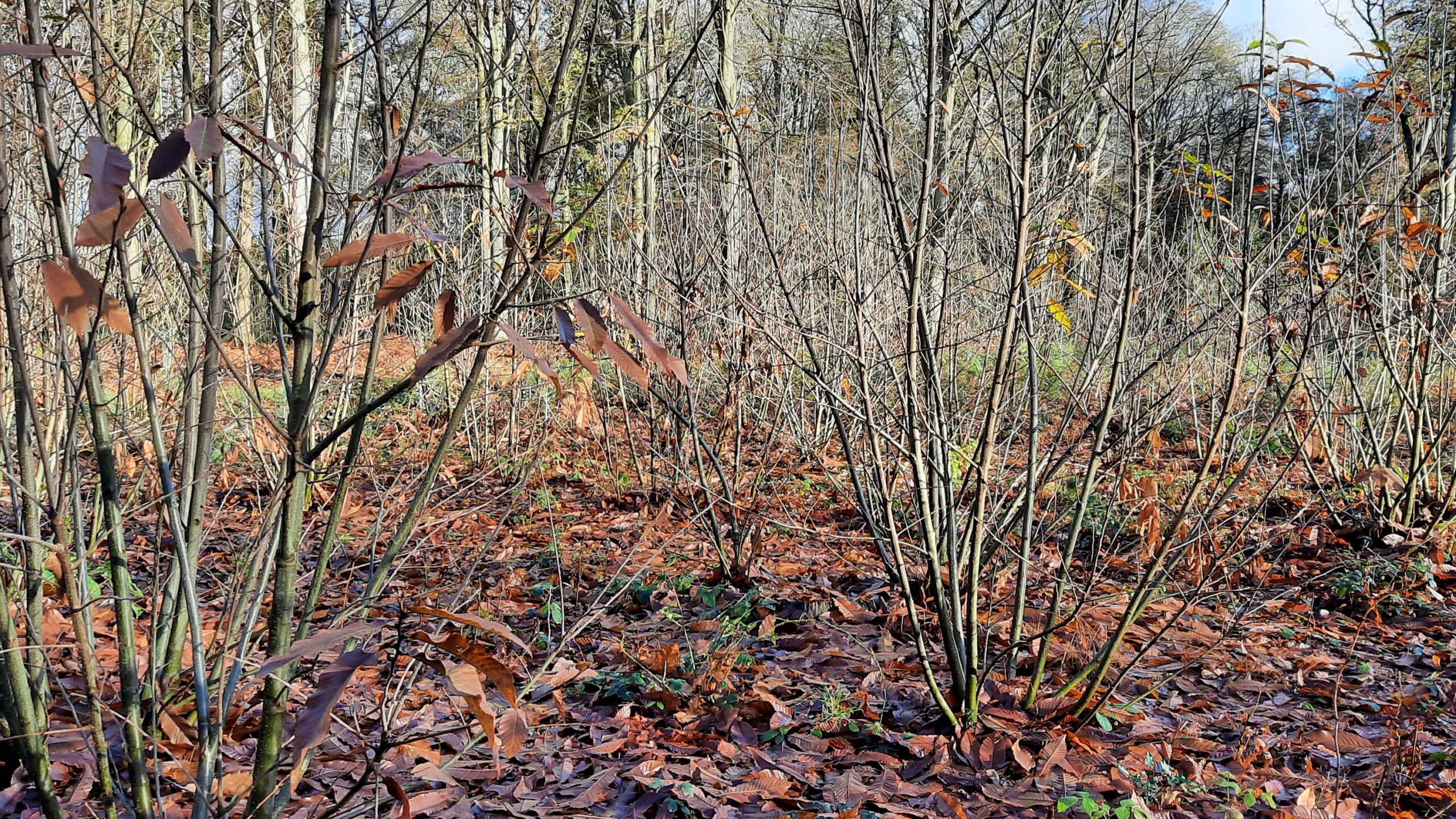
Above: coppice already growing at a considerable rate
5,000 trees were planted in February/March 2022 in an area where select felling of 1910 plantings of beech, sweet chestnut and oak had taken place in 2021.
The wood is about 60 metres (200ft) above sea level, on a sandy plateau with pockets of clay and with around 63cm (25inches) of rainfall a year.
-
Species choice
Douglas fir grows well locally and has a good market. It is also being planted elsewhere in the wood. Here it is planted at 2m x 2m spacing.
From the chestnut stumps, the coppice is now growing at a considerable rate. At Year 2-3 it will be reduced to two shoots per stool and then later to one to grow on to maiden trees.
There is also abundant regeneration of larch, birch, beech, Scots pine and Douglas fir. This is being managed to enhance the species mixes within the woodland.
Replanting with beech was discounted. Damage caused by grey squirrels means it is unlikely to reach full potential. This is despite rigorous squirrel control which saw over 800 grey squirrels caught on 240 hectares in 2022 alone.
Risks of introducing phytophthora also meant planting new larch was excluded.
Acute Oak Decline was recorded in the wood in 2022. Thinning was carried out and no new cases have been confirmed among those trees left standing. Nevertheless, it was felt replanting with oak here would not be appropriate.
-
Care and maintenance
There were exceptionally high survival rates, despite two hot and dry summers. The area has been weeded 2022-23 and will probably need weeding again in 2024. The emergence of vigorous regeneration among both Douglas fir and chestnut coppicing has mean that no replacement planting has been required.
New plantings and the coppice regrowth is being sprayed with Trico deer repellent in spring and early autumn each year for possibly up to four years.
Fulmodeston Severals
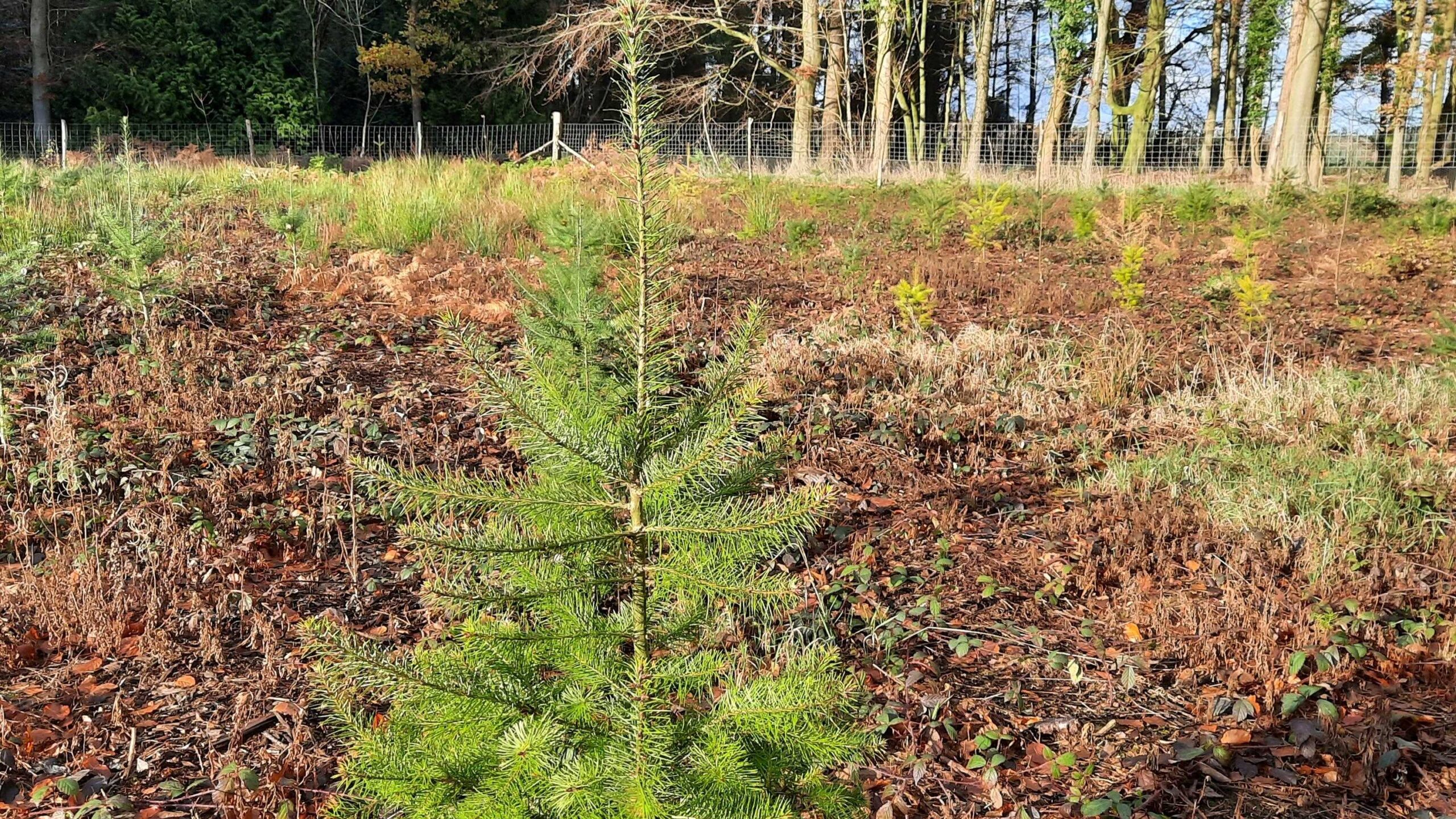
Above: Douglas fir is planted in a deer fenced enclosure
9,650 trees planted over 3.06 ha.
This wood too is around 60 metres (200ft) above sea level with around 63cm (25inches) of rainfall a year. It is partly on an Ancient Woodland site with acidic soil conditions (greensand over clay), ideal for conifer growing.
Fulmodeston Several was planted with an unusual and broad mix of conifer and hardwood species in 1865 by the 2nd Earl of Leicester when the wood was bought to add to the nearby Holkham Estate. The wood was acquired by the current owners from the Holkham Estate in 1979, and has been selectively thinning and restocked to increase capital value and to make it productive now and into the future.
-
Species choice
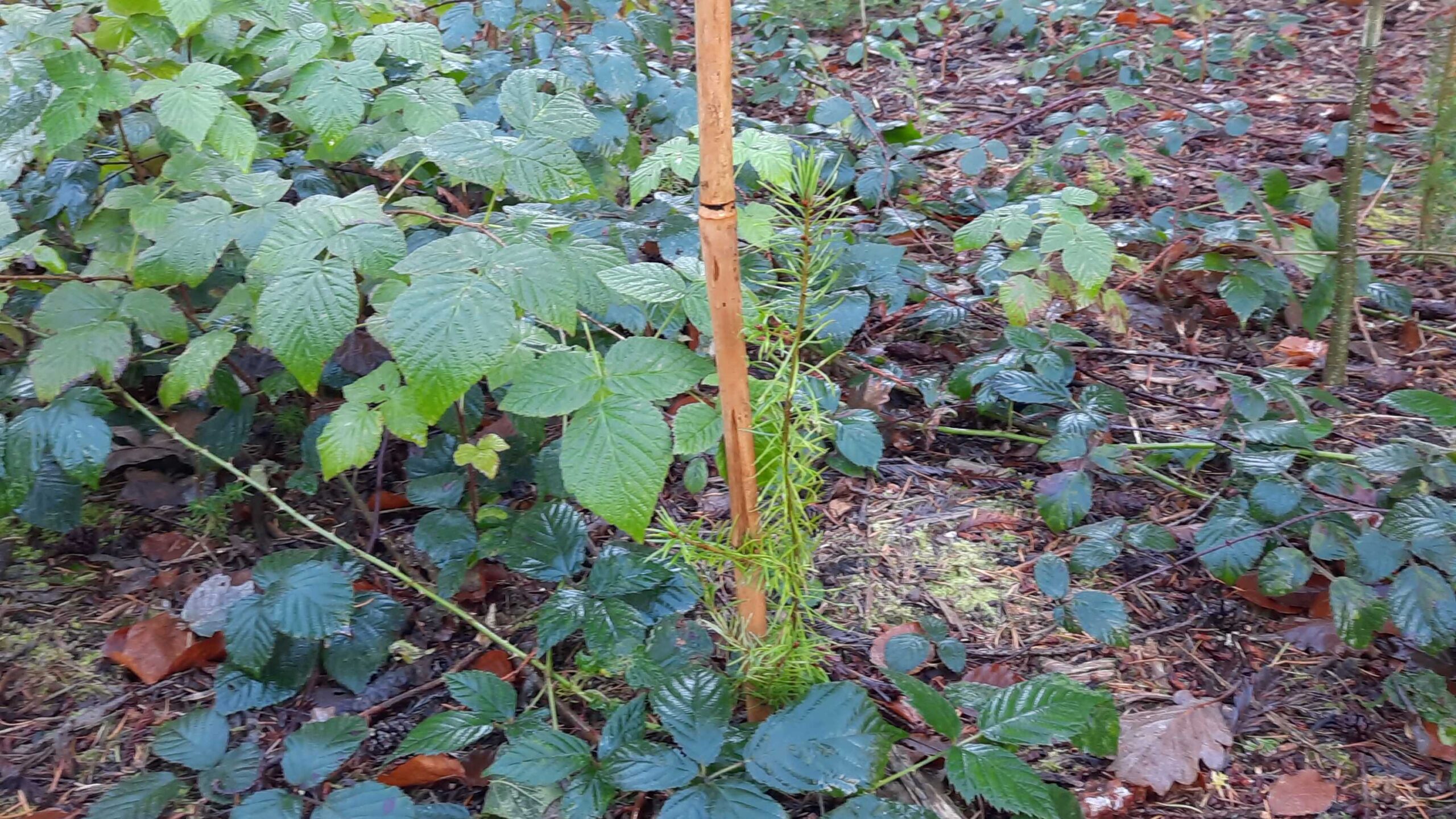
Above: Natural regen marked for transplant during 2024
Oak, Douglas fir and larch were felled in 2021.
Restocking of oak (Quercus Robur) and Douglas fir within deer fenced areas was completed in spring 2022. There has been substantial natural regeneration of both hardwood and softwood species. Some of the natural regeneration has been marked to be transplanted elsewhere in the wood during 2023-24. No new larch has been planted although there is some natural regeneration.
The oak has been planted at 1.5m x 1.25m spacing with the Douglas fir at 2m x2m.
-
Care and maintenance
The replanting of Douglas fir suffered more losses than elsewhere – around 30% . The stresses of unusual climate conditions and compaction by harvesting equipment are the likely causes of failure.
In compartments of Douglas fir some Coastal Redwoods (Sequoia sempervirens) was planted to supplement the first beat up and to add variety.
In the oak planted compartment, the survival rate is almost 95% and strong regeneration of a variety of species means no replanting has been necessary. Deer fencing will protect against all deer and hares. It will remain in place for up to 12 years and then the wire netting will be reused as much as is possible.
Provenance
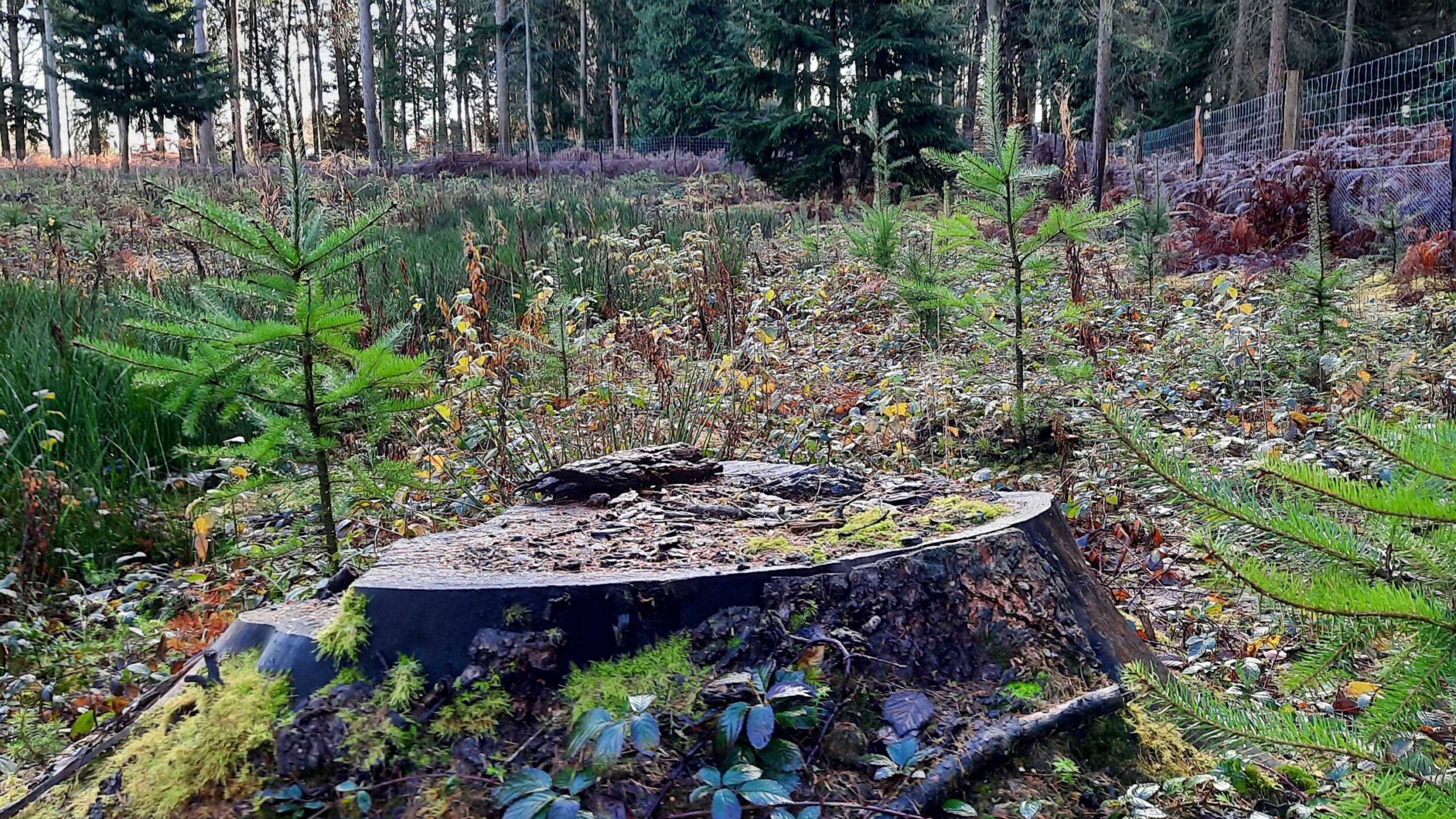
Douglas fir has been sourced from French tested seed orchard La Luzette. It has already proved successful elsewhere in the woods.
Oak is sourced from British Hardwoods Improvement Programme trees elsewhere on the estate. They too have already proved successful elsewhere.
The provenance of all plantings is an important consideration for this estate which has been trialling oak from select seed stands in the Netherlands and Denmark and improved birch from Scandinavia.
More Information
If you are interested in learning more about this project, please email us at rfshq@rfs.org.uk
Grants for Resilient Woodlands
Our Grants for Resilient Woodlands are funded by Train Hugger and Green The UK. They are open for applications from RFS and Royal Scottish Forestry Society (RSFS) members all year round.
These grants are to help people plant trees that will survive and thrive into the future. Creating better, more resilient treescapes for our environment, for people and for the economy.



